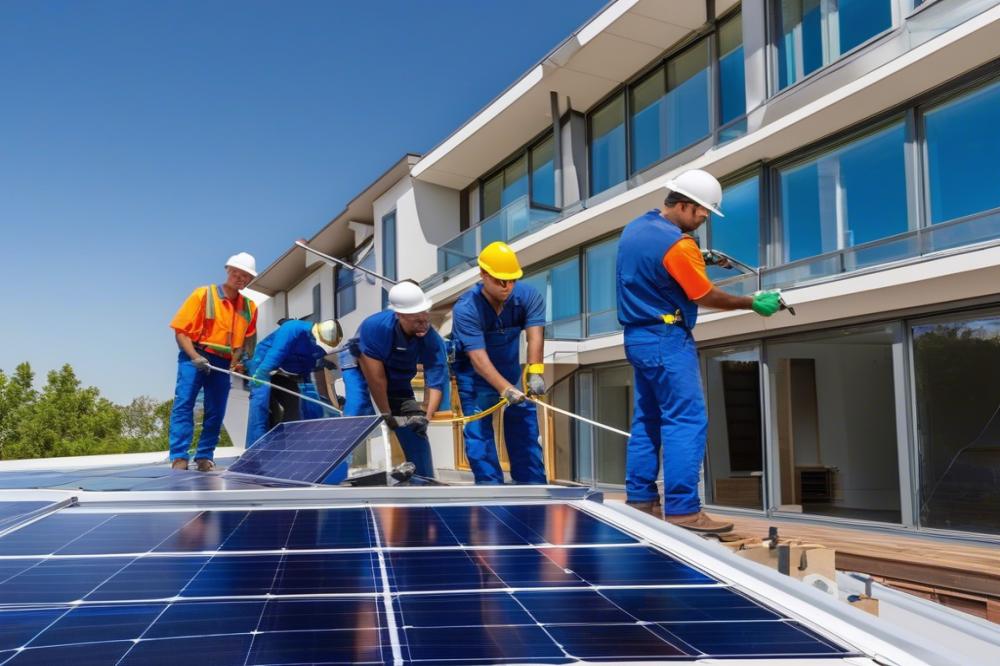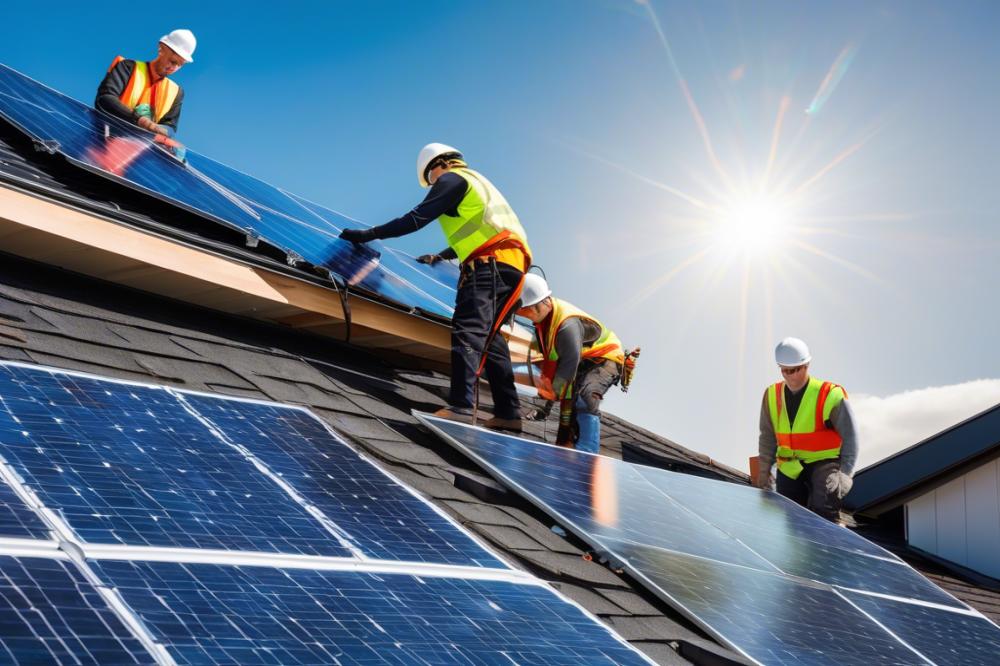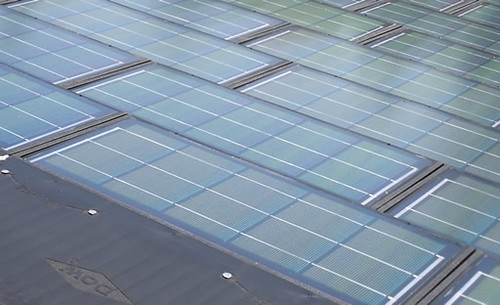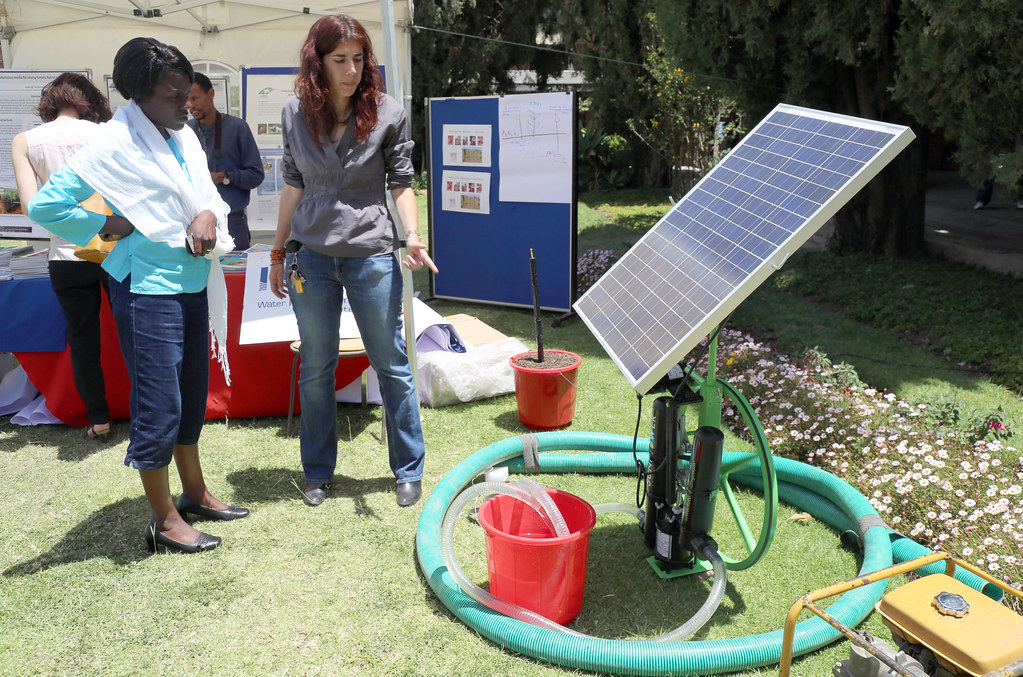Understanding Solar Panels and Their Lifespan
Solar panels play a crucial role in the world of renewable energy. They provide a clean, sustainable source of power, harnessing sunlight to generate electricity. As the demand for solar energy continues to rise, knowing how long these panels last becomes increasingly important.
Different types of solar panels have varying lifespans. Generally, photovoltaic panels are designed to last anywhere from 25 to 30 years. However, their efficiency can begin to decline long before they reach that age. Understanding the degradation rate of a solar system is vital for homeowners and businesses alike. Factors such as location, weather conditions, and maintenance practices can all influence how effectively these panels perform over time.
This article aims to guide you in recognizing when it may be time for solar panel replacement. We will cover the signs of wear to watch for and consider how solar panel efficiency plays into the overall longevity of your solar energy system. If you stay informed about solar industry standards and best practices, you can maximize the lifespan of your investment.
Understanding solar panel lifespan

The term “lifespan” refers to how long solar panels operate effectively. It indicates the duration in which they can produce solar energy at acceptable efficiency levels. Typically, this lifespan is influenced by several factors, such as the type of solar panel, their usage, and the environment in which they are installed.
Factors Influencing Lifespan
Different solar panel types have varying characteristics. photovoltaic panels, for example, often last longer than traditional panels due to advancements in technology. Routine solar panel maintenance also plays a crucial role. Regular inspections and cleaning can help prevent premature failure.
Environmental conditions significantly affect durability. Extreme temperatures, humidity, and storms can contribute to wear and tear. Additionally, geographic location and exposure to sunlight can determine how efficiently panels perform over time. The degradation rate is the measure of how quickly a panel’s efficiency declines. Some may see little degradation, while others could lose significant efficiency within a few years.
Typical Lifespan Ranges
Generally, most solar panels reach their peak efficiency for about 25 to 30 years. Monocrystalline panels often fall on the higher end of this spectrum. They are known for high efficiency and strong performance over long periods. On the other hand, thin-film solar panel types typically have shorter lifespans, averaging around 10 to 20 years. This makes them less ideal for long-term solar system longevity.
Understanding how these factors interact helps anticipate the need for replacements. Observing signs of wear can alert homeowners to potential issues. Solar energy systems can remain viable for decades, but monitoring and maintenance are critical to achieving maximum performance.
Types of Solar Panels and Their Lifespan

Monocrystalline Panels
Monocrystalline panels are built from a single crystal structure. They are recognized for their high efficiency and sleek appearance. Typically, these panels last between 25 to 30 years. Their performance remains strong due to high-quality materials. With good solar panel maintenance, they can outperform other types. However, they are often more expensive than other options.
Polycrystalline Panels
Polycrystalline panels consist of multiple crystal structures. They are less efficient than monocrystalline ones. The average lifespan of these panels is around 20 to 25 years. Their manufacturing process is simpler, which keeps costs lower. Although they may not generate as much power, many satisfied users appreciate their performance. Signs of wear may be less noticeable than in other types.
Thin-Film Panels
Thin-film panels use layers of photovoltaic materials that are quite flexible. Despite their lightweight nature, these panels generally have a shorter lifespan. Most manufacturers claim a longevity of about 10 to 20 years. They perform well in low-light conditions but are less efficient overall. This type can be useful for specialized applications, particularly where space is limited.
Comparison of Efficiency and Lifespan Among Types
In comparing solar panel types, both efficiency and lifespan are critical factors. Monocrystalline panels top the list with high efficiency ratings of around 15% to 20%. Polycrystalline panels usually range from 13% to 16% efficiency. Thin-film panels tend to have lower efficiency, often below 12%.
The degradation rate plays a significant role in determining how long solar systems will work effectively. Monocrystalline panels generally degrade at a slower rate, meaning they retain more of their original efficiency over time. Polycrystalline and thin-film panels, however, might lose efficiency more quickly, especially if not properly maintained. Understanding these factors can help consumers make informed choices when investing in renewable energy.
Signs of Wear and Degradation Rate
Many homeowners may wonder when it’s time to replace their solar panels. Common signs indicate that replacement might be necessary. Look for physical damage such as cracks, chips, or discoloration on the surface of the panels. These issues can significantly affect solar panel efficiency. If you notice a decrease in energy production, this can also be a clear indication of wear. Additionally, check for moisture or corrosion around the panel edges, as this can lead to further degradation.
Understanding the degradation rate is crucial for anyone with photovoltaic panels. Over time, all solar panel types will experience a drop in energy output. Most panels lose about 0.5% to 1% of their efficiency each year. This gradual decline can accumulate, meaning that after 20 to 25 years, panels may be producing only about 70% to 85% of their original capacity. Monitoring the performance of your solar system can help you recognize this trend before it becomes severe.
Regular solar panel maintenance plays a vital role in extending longevity. Cleaning the panels is important, as dirt and debris can block sunlight, reducing solar energy production. Furthermore, periodic inspections can spot minor issues before they escalate into major problems. Upkeep not only maintains efficiency but also aligns with solar industry standards, maximizing the investment in renewable energy. Routine check-ups from professionals can help ensure your panels are operating at their best.
Impact of Usage on Solar Panel Longevity
Where solar panels are installed plays a significant role in their lifespan. For example, urban areas might expose them to pollution, which could harm efficiency over time. Rural settings, in contrast, often have cleaner air but may face dust accumulation. Such factors directly affect the performance of photovoltaic panels. Additionally, places with heavy shading from trees or buildings see diminished effectiveness. These environmental aspects can ultimately reduce the overall solar system longevity.
Influence of Weather and Environmental Factors
Weather patterns can greatly determine how long solar panels last. Regions with extreme temperatures, such as intense heat or harsh cold, may experience faster wear and tear. Rain provides a natural cleaning mechanism, yet constant moisture could lead to corrosion issues. Hail can cause physical damage, impacting the integrity of solar panel types. The degradation rate of solar panels often increases with consistent exposure to severe weather conditions. Moreover, long periods of strong sunlight might degrade certain materials quicker than expected. Thus, understanding local climates is vital for potential solar energy users.
Significance of Consistent Maintenance Practices
Regular solar panel maintenance can extend the useful life of your installation. Keeping panels clean helps maintain optimal solar panel efficiency. A buildup of dirt and debris diminishes energy output. Checking for signs of wear, like cracks or discoloration, ensures problems are spotted early. Neglecting these practices can exacerbate minor issues, leading to costly repairs. Following solar industry standards for inspections can also provide insights into the health of your system. Overall, investing time into proper upkeep pays off in the long run.
Evaluating Solar Panel Efficiency
Solar panel efficiency plays a key role in understanding how well your panels perform over time. When photovoltaic panels are first installed, they usually operate at peak efficiency. This means they convert sunlight into electricity at the highest rate. However, as years pass, their performance can decline.
It is important to recognize the signs of wear and tear. A decrease in energy output can often indicate a drop in efficiency. Dirt and debris on the surface can block sunlight, but performance loss could also stem from more serious factors. High temperatures or poor installation practices can accelerate the degradation rate of panels. Moreover, certain types of solar panels may age differently based on their materials and construction.
Monitoring your solar energy system’s output is crucial. Comparing current data to initial metrics will help in determining effectiveness. If you notice performance dipping significantly over the years, it might be time to reassess your solar panels. Keeping track of the degradation rate is also essential for understanding solar system longevity.
Indicators of Declining Efficiency Over Time
Several factors come into play when assessing efficiency. First, one should look for changes in your energy bill. An unexpected increase could mean your solar panels are not generating enough power. Additionally, shade from nearby trees or buildings can impact output. Regular solar panel maintenance helps identify and mitigate these issues early.
Cracks or discoloration on the panels can further signal a problem. These signs of wear can lead to reduced energy conversion, causing frustration for homeowners. Solar industry standards suggest that photovoltaic panels should maintain a high efficiency level for around 25 years. If you find your panels not meeting this benchmark, consider exploring your options.
When to Consider Upgrading for Better Efficiency
Upgrading your solar panels can bring several benefits. Choosing newer solar panel types may provide increased efficiency and advanced technology. If your system was installed a decade ago, consider that newer panels are often made with improved materials. This can yield better returns on investment in the long run.
It can be challenging to navigate the replacement process. However, think of the long-term benefits of increased efficiency in terms of cost savings and energy production. If you notice significant performance declines, it is vital to consult with a professional. They can help evaluate your options and guide you to make an informed decision.
Solar Industry Standards and Recommendations
The solar industry has evolved over the years, establishing standards aimed at ensuring reliability and quality. These standards dictate how different types of solar panels are manufactured, tested, and rated. Most solar panels meet certain certifications, like those from the International Electrotechnical Commission (IEC) and Underwriters Laboratories (UL). These certifications help consumers understand what to expect in terms of performance and safety.
Warranties play a significant role in the longevity of solar systems. A typical warranty for solar panels lasts between 25 and 30 years. It generally covers defects in materials or workmanship. Additionally, manufacturers often provide a performance warranty that guarantees a certain level of efficiency over time. For instance, many solar panel types promise at least 80% efficiency after 25 years, ensuring that users can still benefit from solar energy well into the future.
Recommendations from Industry Experts
Experts recommend regular solar panel maintenance to maximize efficiency. Routine checks can help identify signs of wear early on. Components like inverters or batteries might require replacement before panels do. Keeping the panels clean and free from debris also assists in maintaining optimal solar panel efficiency.
Monitoring degradation rates is essential for understanding system performance. While most panels exhibit a gradual decrease in output, significant drops should be investigated. If the efficiency of photovoltaic panels declines faster than expected, it might signal that a replacement is necessary. Useful diagnostics can reveal these issues, guiding users on when to act.
Surveys and studies indicate that many homeowners remain unaware of when replacement should occur. Recommendations vary, but it’s often suggested to evaluate system performance every few years. In regions with harsh weather conditions, such as heavy hail or strong winds, panels may suffer from damage more rapidly. Understanding local climate impacts on solar system longevity is crucial.
Educating yourself on these solar industry standards can empower decisions regarding replacements. The embrace of renewable energy brings a commitment to sustainability. Making informed choices about solar panel upkeep and replacements ensures you’re investing in a reliable energy source.
Final Thoughts on solar panel replacement
Understanding the lifespan of your solar panels is crucial for every homeowner. Most panels last between 25 to 30 years, but this can vary. Factors such as type, usage, and environmental conditions play a significant role. Different materials offer different longevity, so it’s essential to know what you have. Knowing when to replace them isn’t just about age; it’s also about performance. Monitoring solar panel efficiency can help you determine when it’s time for an upgrade.
Regular maintenance is key. Cleaning dirty panels and inspecting for damage can extend their life. Scheduled check-ups can spot potential issues early. It’s always better to address problems before they escalate. An unmonitored system may suffer from reduced energy production. Consequently, you might lose out on savings and energy efficiency.
Staying informed about advancements in solar technology is equally important. The field is constantly evolving, with innovations potentially increasing power output or reducing costs. New photovoltaic panels may present significant advantages over older models. Each year brings fresh developments that could benefit your setup. Knowledge empowers you to make educated choices about your energy needs.
Overall, keeping an eye on your system ensures you get the most from your investment. Being proactive can save you money while supporting the environment. As you navigate your solar journey, remember that informed decisions lead to better energy solutions.



